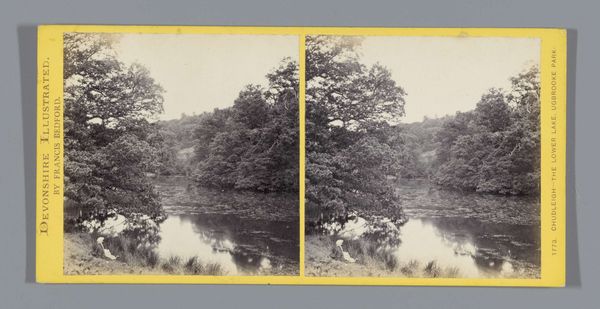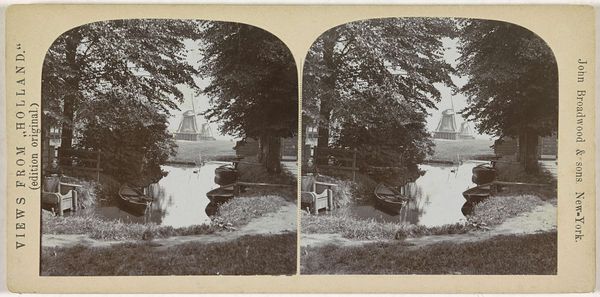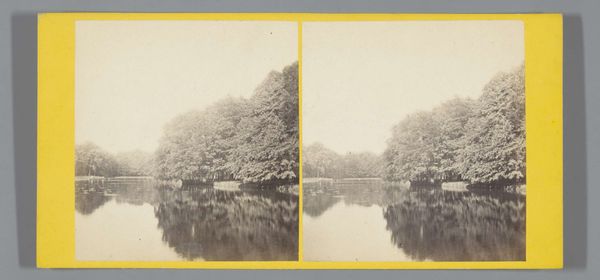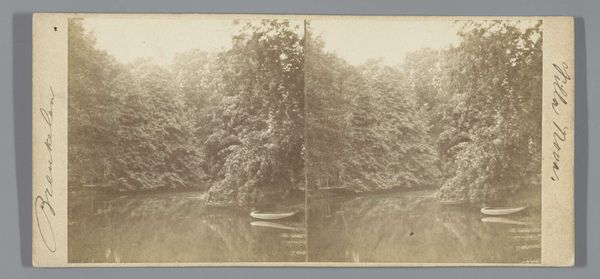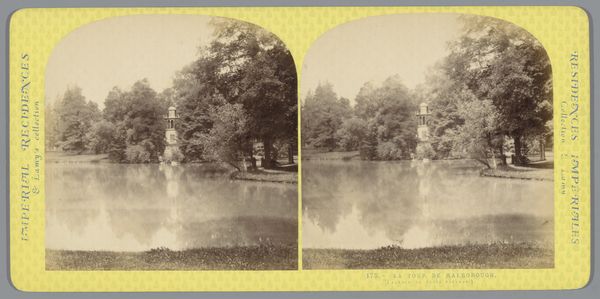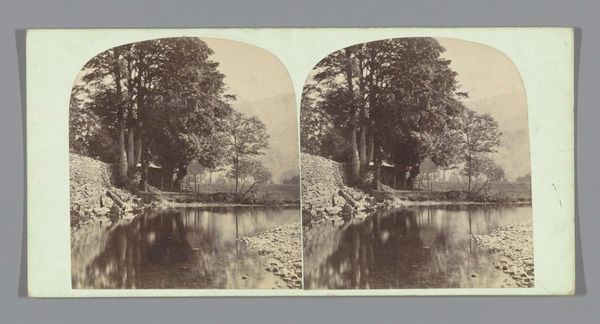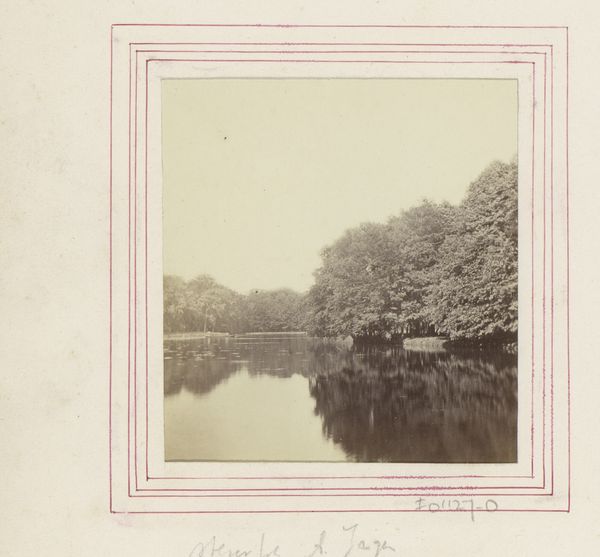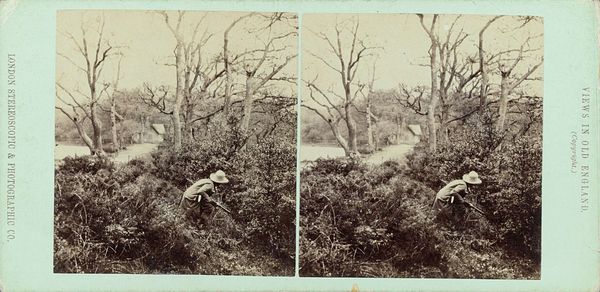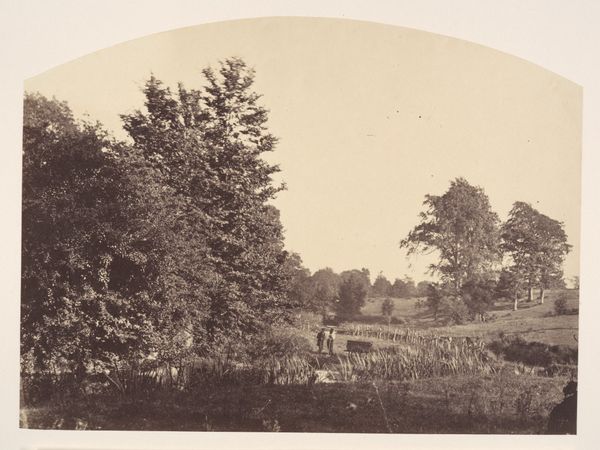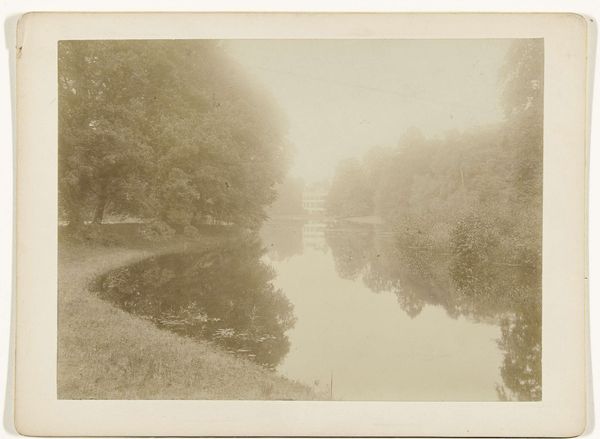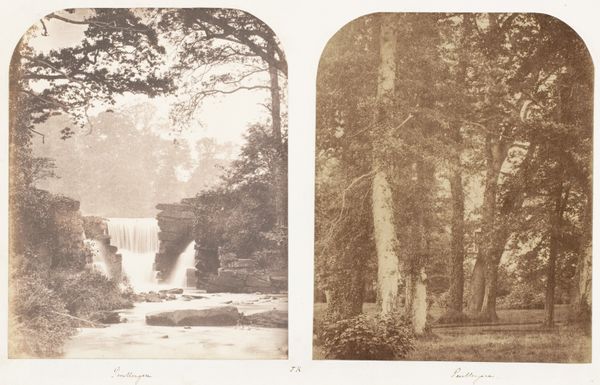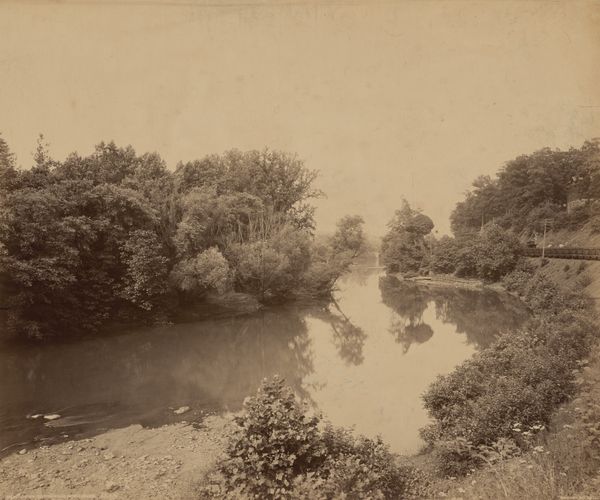
Dimensions: 8 × 7.7 cm (each image); 8.8 × 17.8 cm (card)
Copyright: Public Domain
This card featuring two photographs of Fountains Abbey, known as a stereograph, was likely made in the 19th century by an anonymous photographer. The twin images, printed using a chemical process on paper, were then mounted on card stock to create a 3D effect when viewed through a special viewer. The photographic print was a revolutionary medium. Unlike painting or sculpture, photography allowed for the relatively quick and inexpensive reproduction of images, which were in turn widely distributed and consumed. This process democratized image-making, taking it away from the traditional domain of elite artists. Here, the photographer captures a picturesque view of Fountains Abbey. The very act of framing nature as a commodity reflects the changing relationship between people, landscape and labor during the Industrial Revolution. Cheap images like these played a pivotal role in shaping popular taste, fueling the rise of tourism and the commodification of leisure time. Recognizing photography's role in documenting and shaping culture challenges traditional notions of art, leading us to consider the broader social and economic contexts in which images are created and consumed.
Comments
No comments
Be the first to comment and join the conversation on the ultimate creative platform.
